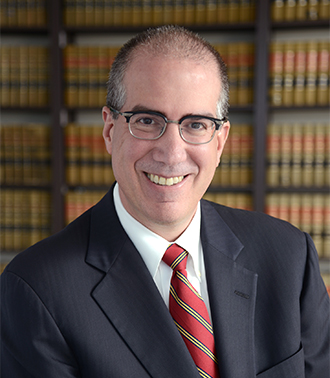What You Need To Know About the New Stablecoin Legislation
Analyzing the GENIUS Act
The enactment of a federal stablecoin law, a key feature of the financial services agenda of the Trump administration and Congress, has become a reality after years of deliberation.1 The U.S. House of Representatives and the U.S. Senate both voted, with substantial majorities, to enact the GENIUS Act (Guiding and Establishing National Innovation for U.S. Stablecoins Act of 2025, which had been adopted by the Senate 68-30 on June 17, 2025, and the House 308-122 on July 17, 2025), and President Trump signed it into law on July 18, 2025. The GENIUS Act will establish a novel federal regulatory framework for this particular form of digital asset.
This Advisory summarizes the GENIUS Act and discusses the opportunities that it might provide for bank and nonbank institutions.
This Advisory is part of a series by Arnold & Porter covering the evolution of the digital asset landscape in the U.S.,2 and updates our June 2025 Advisory on the stablecoin legislation that had been proposed in each chamber to reflect recent developments and the eventual passage of the GENIUS Act. For additional information on stablecoins, please see our Introduction to Stablecoins Advisory and a Law360 article prepared by Arnold & Porter attorneys on opportunities and challenges for banks posed by the GENIUS Act.
Analyzing the GENIUS Act
How have stablecoins been regulated before now?
Until now, stablecoins have lacked a comprehensive federal regulatory framework. Issuers and intermediaries of stablecoins have not been subject to uniform regulatory requirements. Instead, they have been regulated under state laws and regulations — principally state money transmitter laws that vary by jurisdiction and generally apply to various forms of payment services providers. Some states, including New York, California, and Arkansas, regulate one or more aspects of stablecoin issuance and custody under state-level digital asset regulatory frameworks. Meanwhile, the status of payment stablecoins under federal securities laws has been a moving target over the past few years and the federal bank regulators have only recently begun to liberalize their standards for approving activities involving stablecoins and other digital assets.
Moreover, federal stablecoin legislation comes against a backdrop of more permissive attitudes toward banks’ digital asset activities from federal banking agencies. The federal banking agencies recently have liberalized restrictions on the engagement by banking organizations in digital asset activities and further clarified supervisory expectations with respect to the conduct and outsourcing of such activities.3 Banking organizations now may engage in such activities, without prior notice to or receipt of approval from the relevant agency, provided that the activities are carried out in accordance with safe and sound banking principles.4
What does the GENIUS Act cover, generally?
The GENIUS Act creates a regime for the issuance and regulation of payment stablecoins. It will allow payment stablecoins to be issued by subsidiaries of insured depository institutions, other entities5 approved by the Office of the Comptroller of the Currency (OCC), and entities authorized to issue stablecoins under qualifying state regimes (“permitted payment stablecoin issuers”). The GENIUS Act sets forth standards for reserving practices, supervision and enforcement, Bank Secrecy Act (BSA)/Anti-money Laundering (AML), and insolvency, while striking a balance between federal and state authorities over stablecoins. By bringing regulatory clarity to the asset class, the legislation is expected to stimulate the growth of the industry.
What are “payment stablecoins” under the GENIUS Act?
Stablecoins, broadly, are privately-issued digital assets designed to maintain a stable value relative to a peg specified by a reference asset.6 The legislation covers a specific form of this asset, called “payment stablecoins,” which are defined, generally, as digital assets that are, or are designed to be, used as a means of payment or settlement whose issuer (1) is obligated to convert, redeem, or repurchase such asset for a fixed amount of monetary value; and (2) represents that the asset will maintain, or create the reasonable expectation that it will maintain, a stable value relative to a fixed amount of monetary value.7
The GENIUS Act clarifies that tokenized deposits are not covered by the legislation, leaving space for banks to continue issuing that kind of digital asset without being subject to the regulatory requirements of the act — and possibly stimulating the growth of that asset class as well.
What are the reserve requirements for payment stablecoins?
The GENIUS Act establishes reserving standards for stablecoins on at least a “1 to 1” basis with safe assets, such as Treasuries with relatively short maturities, certain repos, and deposits, as well as standards for redemption policies and fees, and requirements for the public reporting and auditing of such reserves.8
Stablecoin issuers will be required to publish monthly reports on their websites disclosing the total number of outstanding payment stablecoins issued by the issuer, and the amount and composition of the reserves underlying the issued stablecoins. In addition, in the subsequent month, these reports will be required to be examined by an independent public accounting firm, and the issuer’s CEO and CFO will be required to attest to their accuracy in submissions to their relevant federal or state regulator.
Notably, the GENIUS Act is silent on whether payment stablecoin issuers will be permitted to access Federal Reserve master accounts.9 This silence is likely to leave these judgments to the discretion of the Federal Reserve, a subject that has been a matter of some controversy over the past several years.10
Who may issue a payment stablecoin?
Under the GENIUS Act, issuance of payment stablecoins will be restricted to (1) subsidiaries of insured depository institutions approved under applicable federal regulatory regimes to issue stablecoins, (2) “federal qualified payment stablecoin issuers” approved by the OCC to issue payment stablecoins, including “nonbank entities,” uninsured national banks, and federal branches (but, curiously, not federally licensed state branches and agencies) of foreign banking organizations, or (3) certain entities that will not qualify as “federal qualified payment stablecoin issuers” and that are approved by a state regulatory agency to issue payment stablecoins.
The activities of permitted payment stablecoin issuers generally will be limited to the issuance, redemption, and management of, and providing of custodial or safekeeping services for, payment stablecoins. The ability of nonbanks to issue stablecoins is notable; payment stablecoins bear similarities to banking products, and there is a historically strong barrier in U.S. law between banking and commerce.
What federal agencies will regulate payment stablecoin issuers?
Payment stablecoin issuers that are subsidiaries of insured depository institutions generally will be regulated by the federal banking agency that supervises the parent depository institution.11 Other permitted issuers, including federal branches of foreign banking organizations and uninsured national banks, will be regulated by the OCC. Institutions will need to apply to the appropriate federal agency for permission to issue payment stablecoins.
Nonbank entities could apply to the OCC for permission to issue payment stablecoins as a “federal qualified payment stablecoin issuer” and, if successful, would be supervised by the OCC. Further, the GENIUS Act includes provisions addressing the status of non-financial services public companies, which are defined as publicly-traded companies that are not predominantly engaged in “financial activities” for purpose of Section 4(k) of the Bank Holding Company Act (a provision of the Gramm-Leach-Bliley Act of 1999 to allow financial holding companies to engage in a broader range of activities). The GENIUS Act provides further that such companies are not permitted to issue payment stablecoins unless authorized by a “Stablecoin Certification Review Committee” consisting of representatives from the U.S. Department of the Treasury (Treasury), Federal Reserve, and Federal Deposit Insurance Corporation (FDIC).12 The same prohibitions will expressly apply to non-U.S. companies that are not predominantly engaged in “financial activities.”
Federal stablecoin regulators will be required to promulgate a regulatory regime governing stablecoin issuance, including capital, liquidity risk, reserve asset diversification, interest rate risk, operational risk, and other risk management standards tailored to the business of issuing stablecoins. The GENIUS Act will limit the liquidity risk requirements to the reserve requirements specified in the legislation. Federal standards apply to federally permissioned issuers, while state standards apply to state-permissioned issuers.
What role will state regulators play?
Under the GENIUS Act, each state payment stablecoin regulator will be required to certify that its regulatory regime meets the standards of the legislation, and such certification will be reviewed by the Stablecoin Certification Review Committee. Certification will be granted if the standards of a state regime are deemed to be substantially similar and meet or exceed those of the federal regime. The Secretary of the Treasury will issue rules for making determinations of substantial similarity. State regulatory agencies would be granted supervisory, examination, and enforcement authority over “state qualified payment stablecoin issuers.” States will be required to recertify on an annual basis.
The GENIUS Act will permit only those stablecoin issuers with total market capitalization of less than $10 billion to opt for regulation under a state-level regulatory regime and will create a transition mechanism if such issuers exceed this threshold.
What does the legislation say about safeguarding custody of stablecoins?
A person may only engage in the business of providing custodial or safekeeping services for payment stablecoins, reserves, payment stablecoins used as collateral, or private keys used to issue payment stablecoins if they are (1) subject to supervision or regulation by (i) a federal payment stablecoin regulator or another primary financial regulator, or (ii) a state bank or credit union supervisor (that makes certain information available to the Federal Reserve), and (2), subject to some exceptions, segregate and avoid commingling customer funds according to applicable federal law or regulations.
What does the legislation say about BSA/AML and sanctions requirements?
Permitted payment stablecoin issuers will be treated as financial institutions for purposes of the BSA and subject to applicable laws regarding the prevention of money laundering, customer identification, due diligence, and economic sanctions.13 Permitted payment stablecoin issuers are also required to ensure that they have the technical capabilities, policies, and procedures to block, freeze, and reject transactions that violate federal or state laws, and be able to comply with all applicable court orders. Federal and state regulators will further be required to address BSA and sanctions compliance standards as part of the more general list of requirements affecting capital, liquidity, and risk management that they will have to address in their respective stablecoin regulatory regimes.
Treasury is also tasked with adopting rules, tailored to the size and complexity of permitted payment stablecoin issuers, to ensure the implementation of these requirements. Within 30 days of enactment of the GENIUS Act, the Secretary of Treasury will seek public comment to identify innovative or novel methods (e.g., artificial intelligence and the use of blockchain technology and monitoring) that regulated financial institutions use to detect illicit activity involving digital assets. In addition, the Financial Crimes Enforcement Network will be responsible for issuing public guidance and rules regarding, among other things, the monitoring, identification, and reporting of illicit activity and obfuscation efforts involving stablecoins.
What is the enforcement regime prescribed by the legislation?
Federal stablecoin regulators will have several enforcement mechanisms available (similar to the traditional enforcement methods available to federal banking regulators) that will enable them to enforce the GENIUS Act or any regulation or order issued under the act. Regulators will be able to revoke the registration of permitted stablecoin issuers, pursue cease-and-desist proceedings, remove institution-affiliated parties from their position or office, and prohibit further participation in the stablecoin industry.
In addition, any person14 who issues a payment stablecoin and who is not a permitted payment stablecoin issuer, and any institution-affiliated party of such a person who knowingly participates in issuing such a payment stablecoin, will be liable for a civil money penalty of up to $100,000 for each day such payment stablecoins are outstanding. Further, any person who materially violates the act or any regulation or order promulgated under the act will be liable for a civil money penalty of up to $100,000 per day that the violation continues, and up to $200,000 per day if the violation were committed knowingly.
The legislation provides limited federal back-up enforcement authority against state qualified stablecoin issuers. The Federal Reserve will be able to pursue an enforcement action against a state issuer under “unusual and exigent” circumstances as determined by the Federal Reserve . The OCC will have the same authority over OCC-regulated entities (such as nonbank issuers) subject to state regulatory oversight.
What does the legislation say about insolvency?
The legislation provides material protections in the event of an insolvency for persons holding payment stablecoins issued by the payment stablecoin issuer. First, the legislation amends section 362 of the Bankruptcy Code to apply the automatic stay to the redemption of stablecoins and adds a provision that allows stablecoin holders to obtain relief from the automatic stay, with ratable distributions to commence within 14 days after a hearing on a motion for relief from the automatic stay. Second, the legislation amends section 507 of the Bankruptcy Code to provide (1) a priority claim for stablecoin holders against the reserves of stablecoin issuers that is senior to any other claims against the stablecoin issuer and (2) a super-priority claim against the stablecoin issuer for any deficiency in the stablecoin reserves that is senior to all other claims, including administrative claims. Third, the legislation amends section 541 of the Bankruptcy Code to exclude stablecoins from property of the estate. Fourth, legislation requires the OCC to raise and appear and be heard on any issue, including the protection of customers, in bankruptcy proceedings in which the debtor is a permitted payment stablecoin issuer.
The primary federal payment stablecoin regulators are also required to perform a study of the potential insolvency proceedings of permitted payment stablecoin issuers, including examining (1) existing gaps in the bankruptcy laws for permitted payment stablecoin issuers, (2) the ability of payment stablecoin holders to be paid out in full following insolvency of a permitted payment stablecoin issuer, and (3) whether additional authorities are needed to implement orderly insolvency regimes regarding stablecoins issuers. The results of this study are to be published not later than three years after the date of enactment of the GENIUS Act.
Can stablecoin issuers pay interest on payment stablecoins?
The GENIUS Act will prohibit stablecoin issuers (both permitted stablecoin issuers and foreign stablecoin issuers) from paying “interest or yield” to individuals holding payment stablecoins. This prohibition will more clearly distinguish payment stablecoins from bank deposits. Since the act will still permit depository institutions to tokenize their deposits without becoming covered as a payment stablecoin for purposes of the legislation, this could provide an advantage for tokenized deposits over stablecoins. Some have argued that this is necessary to prevent the erosion of deposits held at depository institutions.
How will the legislation affect foreign stablecoin issuers?
Among other measures, the GENIUS Act will make it unlawful for any digital asset service provider15 to offer, sell, or otherwise make available in the United States a payment stablecoin issued by a foreign payment stablecoin issuer unless (1) the foreign issuer is subject to regulation by a foreign payment stablecoin regulator with a regulatory regime determined by the Secretary of the Treasury to be comparable to U.S. requirements, (2) the foreign issuer registers with the OCC, (3) the foreign issuer holds reserves in a U.S. financial institution sufficient to meet liquidity demands of U.S. customers, unless otherwise permitted under a reciprocal arrangement, and (4) the foreign country in which the foreign issuer is domiciled and regulated is not subject to comprehensive economic sanctions by the U.S. or in a jurisdiction that the Secretary of the Treasury has determined to be a jurisdiction of primary money laundering concern. This prohibition will likewise apply unless the foreign issuer has the technological capability to comply, and will comply, with the terms of any lawful order16 and any reciprocal arrangement created and implemented by the Secretary of the Treasury between the U.S. and other jurisdictions regarding payment stablecoins.
How will the legislation affect the existing banking authority of banking institutions?
The GENIUS Act includes provisions stating that nothing in the law may be construed to limit the authority of a depository institution, credit union, or trust company to engage in activities otherwise permissible under applicable state and federal law, including issuing digital assets that represent deposits, utilizing a distributed ledger for the books and records and to affect intrabank transfers and providing custodial services for payment stablecoins, private keys of payment stablecoins, or reserves backing stablecoins.
Further, the act forbids federal banking regulators, the National Credit Union Administration, and the U.S. Securities and Exchange Commission (SEC) from requiring institutions to include assets held in custody, including against issued stablecoins, as a liability on their balance sheet, and also generally prohibits regulators from requiring institutions to hold additional regulatory capital against these assets in custody, except where additional capital requirements are necessary to “mitigate against operational risks inherent with the custody or safekeeping services.”
The GENIUS Act will also forbid regulators from requiring institutions to recognize a liability for any obligations related to services performed with respect to digital assets that the entity does not own.
How will the legislation interact with existing securities and commodities regulations?
The GENIUS Act will carve out stablecoins from the scope of existing securities laws (including the Securities Act of 1933, the Securities Exchange Act of 1934, the Investment Advisers Act, the Investment Company Act of 1940, the Securities Investor Protection Act of 1970, and the Commodity Exchange Act) by amending those laws to clarify that a security, as defined in those laws, will not include a payment stablecoin issued by a permitted stablecoin issuer.
In addition to passing the GENIUS Act, the House approved H.R. 3633, the Digital Asset Market Clarity Act of 2025 (Clarity Act), with bipartisan support. The Clarity Act provides a regulatory structure for non-stablecoin crypto assets and clarifies the oversight roles of the Commodity Futures Trading Commission and SEC. While the Clarity Act briefly defines stablecoins, the legislation is complementary to the GENIUS Act. If approved by the Senate and enacted, the Clarity Act will provide a regulatory mandate that works alongside the GENIUS Act. Together, they will provide an overarching regulatory framework for crypto assets in the U.S.
When will the GENIUS Act become effective?
The effective date is the earlier of either 18 months after the enactment of the GENIUS Act (i.e., January 18, 2027), or 120 days after federal regulators issue any final regulations implementing the act. Each federal payment stablecoin regulator, the Secretary of the Treasury, and each state payment stablecoin regulator shall issue rules within one year after enactment of the act.
Opportunities for Financial and Non-Financial Institutions
The enactment of the GENIUS Act into federal law presents financial institutions with a variety of opportunities to enter the digital asset arena or increase their engagement in this market. Banks and nonbanks alike may wish to consider becoming payment stablecoin issuers themselves, through stablecoin subsidiaries in the case of banks, by utilizing the regulatory framework as a new means of bringing funding into their institutions or serving customers in innovative ways. Some banks are exploring participating in stablecoin consortiums.17 Other opportunities include tokenization of deposits and paying interest on such instruments; establishing a digital asset payment network or platform built around stablecoins; or creating a digital wallet service for customers. Banks might also consider serving as custodians for the reserves of bank or nonbank stablecoin providers, or engaging in cryptocurrency custody services, including for stablecoins.18 The federal bank regulators have been liberalizing their formerly restrictive policy toward bank engagement in cryptocurrency activities, and there is every reason to think this trend will continue.19
Different kinds of nonbanks may find plenty of opportunity, as well. Digital asset market participants may find that clarity in the payment stablecoin sector unlocks a welter of new use cases in many kinds of digital asset markets. Stablecoins play a crucial role in the digital marketplace, serving as a digital native store of value and medium of exchange (that is, a money-equivalent suited for the blockchain). They also play an important role in facilitating the exchange of value between blockchain environments, and from fiat into blockchain. The GENIUS Act should provide stimulus to many digital assets and markets products. It has been reported that some nonbanks, including large merchants, are exploring the technology.
In all of these arenas, banks and nonbanks will compete, and the question of whether federal and state standards are actually equivalent figures to be a live question for years to come. Even where banks, nonbanks, and state charters will be subject to equivalent stablecoin issuance regulatory regimes, banks and bank holding companies will be starting from a place of heightened regulatory restrictions — with supervision, capital, liquidity, management, activity, and affiliate transaction requirements that nonbanks do not have. Moreover, nonbank digital assets companies may have more experience and technical know-how in blockchain markets and applications that make them better suited to many roles within the payment stablecoin ecosystem. And, of course, banks, as depository institutions, may operate as service providers to payment stablecoin issuers, for example, as providers of deposit reserves and custody services, while developing other new services to, and partnerships with, digital asset companies and other nonbanks.
Finally, it appears that agency rulemaking will play a significant role in the stablecoin regulatory landscape in the coming months and years, and we expect affected parties will seek to make their voices heard through rulemaking and congressional oversight.
* * *
If you would like more information about the content of this Advisory and how recent developments may impact your business, please contact any of the authors of this Advisory or your usual Arnold & Porter contact. The firm’s Financial Services and Legislative and Public Policy teams would be pleased to assist with any questions that you may have.
© Arnold & Porter Kaye Scholer LLP 2025 All Rights Reserved. This Advisory is intended to be a general summary of the law and does not constitute legal advice. You should consult with counsel to determine applicable legal requirements in a specific fact situation.
-
The White House, Strengthening American Leadership in Digital Financial Technology, Executive Order No. 14178, 90 Fed. Reg. 8647 (Jan. 23, 2025).
-
Please visit the Arnold & Porter Cryptocurrency & Digital Assets page to review the other Advisories in the series, including an Advisory on Federal Banking Agencies Clarify Approach to Bank-Permissible Crypto-Asset Activities.
-
For example, the OCC reaffirmed the permissibility of national banks and federal savings associations providing custody services, accepting dollar deposits as reserves for stablecoins, acting as verification nodes on certain distributed ledger technology (DLT) networks, and engaging in the facilitation of payments on a DLT network. OCC Interpretive Letter Nos. 1170, 1172, 1174, and 1184. The federal banking agencies have also withdrawn two joint statements addressing crypto-asset risks and liquidity risks to banks resulting from crypto-asset market vulnerabilities, and provided new joint guidance on risk management related to crypto-asset safekeeping. See FDIC, Agencies Withdraw Joint Statements on Crypto-Assets (Apr, 24, 2025); Joint Statement on Risk-Management Consideration for Crypto-Asset Safekeeping (July 14, 2025).
-
OCC Interpretive Letter No. 1183; Federal Reserve Board, Press Release, Federal Reserve Board announces the withdrawal of guidance for banks related to their crypto-asset and dollar token activities and related changes to its expectations for these activities; FDIC FIL 7-2025.
-
These other entities that may issue stablecoins pursuant to approval by the OCC include certain nonbank entities, uninsured national banks, and federal branches of foreign banks.
-
See our May 2025 Advisory, An Introduction to Stablecoins.
-
Importantly, by definition, “payment stablecoins” will not include national currencies, bank deposits, or “securities” as defined under the federal securities laws and the Investment Company Act of 1940.
-
The GENIUS Act permits the following kinds of assets to be used as reserves:
“(i) United States coins and currency (including Federal Reserve notes) or money standing to the credit of an account with a Federal Reserve Bank;
(ii) funds held as demand deposits (or other deposits that may be withdrawn upon request at any time) or insured shares at an insured depository institution (including any foreign branches or agents, including correspondent banks, of an insured depository institution), subject to limitations established by the Corporation and the National Credit Union Administration, as applicable, to address safety and soundness risks of such insured depository institution;
(iii) Treasury bills, notes, or bonds — (I) with a remaining maturity of 93 days or less; or (II) issued with a maturity of 93 days or less;
(iv) money received under repurchase agreements, with the permitted payment stablecoin issuer acting as a seller of securities and with an overnight maturity, that are backed by Treasury bills with a maturity of 93 days or less;
(v) reverse repurchase agreements, with the permitted payment stablecoin issuer acting as a purchaser of securities and with an overnight maturity, that are collateralized by Treasury notes, bills, or bonds on an overnight basis, subject to overcollateralization in line with standard market terms, that are — (I) tri-party; (II) centrally cleared through a clearing agency registered with the Securities and Exchange Commission; or (III) bilateral with a counterparty that the issuer has determined to be adequately creditworthy even in the event of severe market stress;
(vi) securities issued by an investment company registered under section 8(a) of the Investment Company Act of 1940 (15 U.S.C. 80a-8(a)), or other registered Government money market fund, and that are invested solely in underlying assets described in clauses (i) through (v);
(vii) any other similarly liquid Federal Government-issued asset approved by the primary Federal payment stablecoin regulator, in consultation with the State payment stablecoin regulator, if applicable, of the permitted payment stablecoin issuer; or
(viii) any reserve described in clause (i) through (iii) or clause (vi) through (vii) in tokenized form, provided that such reserves comply with all applicable laws and regulations.” -
Some banking industry trade groups have opposed creating new avenues for payment stablecoin issuers to access Federal Reserve master accounts over concerns that it could undermine the integrity of Federal Reserve master accounts overall. See, e.g., BPI Statement on HFSC Vote on STABLE Act (Apr. 2, 2025) (“The integrity of Federal Reserve master accounts underpins the financial stability of America’s payment system. We commend Chairman Hill, Subcommittee Chairman Steil and their colleagues in both parties for taking a neutral approach on this issue in the Committee-reported STABLE Act, which ensures that current law on eligibility for master account access remains in place.”).
-
When determining whether or not to allow an entity to hold an account at a Federal Reserve bank, the Federal Reserve bank will evaluate (1) whether the entity has a sufficient statutory basis under federal law for Federal Reserve account access, and (2) what risks access by the entity will pose. See Guidelines for Evaluating Account and Services Requests, 87 Fed. Reg. 51099 (Aug. 19, 2022). These guidelines have not always been consistently applied by Federal Reserve banks to financial technology companies, and there continues to be a lack of clarity regarding in what circumstances financial technology companies will be granted master account access.
-
That is, the OCC, Federal Reserve, FDIC, or the National Credit Union Administration.
-
This committee must unanimously determine that, among other standards, the issuance of a payment stablecoin by such a company will “not pose a material risk to the safety and soundness of the United States banking system, the financial stability of the United States, or the Deposit Insurance Fund,” meet data use standards, and comply with certain “anti-tying” prohibitions set forth in the act.
-
These requirements include maintenance of an effective AML program, retention of appropriate records, monitoring and reporting of suspicious activity, and maintaining an effective customer identification program to ensure appropriate due diligence.
-
Under the GENIUS Act, “person” is defined as “an individual, partnership, company, corporation, association (incorporated or unincorporated), trust, estate, cooperative organization, or other entity.”
-
The GENIUS Act defines a “digital asset service provider” as “a person that, for compensation or profit, engages in the business in the United States (including on behalf of customers or users in the United States) of — (i) exchanging digital assets for monetary value; (ii) exchanging digital assets for other digital assets; (iii) transferring digital assets to a third party; (iv) acting as a digital asset custodian; or (v) participating in financial services relating to digital asset issuance; and (B) does not include — (i) a distributed ledger protocol; (ii) developing, operating, or engaging in the business of developing distributed ledger protocols or self-custodial software interfaces; (iii) an immutable and self-custodial software interface; (iv) developing, operating, or engaging in the business of validating transactions or operating a distributed ledger; or (v) participating in a liquidity pool or other similar mechanism for the provisioning of liquidity for peer-to-peer transactions.”
-
The GENIUS Act defines a “lawful order” as “any final and valid writ, process, order, rule, decree, command, or other requirement issued or promulgated under Federal law, issued by a court of competent jurisdiction or by an authorized Federal agency pursuant to its statutory authority, that — (A) requires a person to seize, freeze, burn, or prevent the transfer of payment stablecoins issued by the person; (B) specifies the payment stablecoins or accounts subject to blocking with reasonable particularity; and (C) is subject to judicial or administrative review or appeal as provided by law.”
-
Gina Herb and Justin Baer, Big Banks Explore Venturing Into Crypto World Together With Joint Stablecoin, Wall St. J., May 24, 2025.
-
The federal banking agencies recently issued a joint statement on risk-management considerations for crypto-asset safekeeping. The joint statement instructs banks engaging in crypto asset safekeeping to (1) engage in an effective risk assessment prior to engaging in crypto-asset safekeeping, (2) consider the evolving nature of the crypto-asset market when providing services, (3) maintain effective controls for cryptographic key management, (4) maintain effective BSA/AML and other compliance controls, and (5) maintain appropriate third-party risk management processes for vendors involved in crypto-asset safeguarding. Joint Statement on Risk-Management Consideration for Crypto-Asset Safekeeping (July 14, 2025).
-
For further information about how bank regulators have clarified their approach to cryptocurrency activities, see our April 2025 Advisory.















